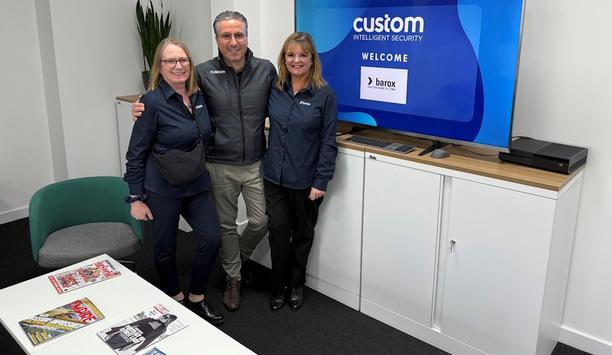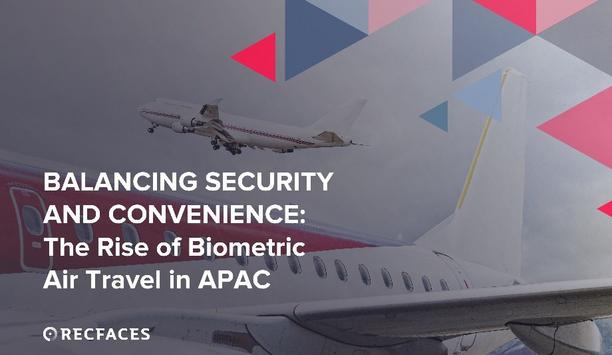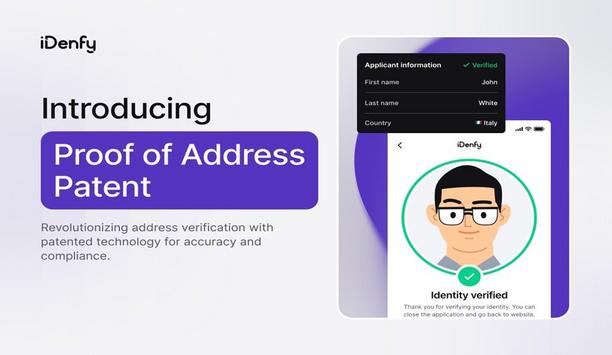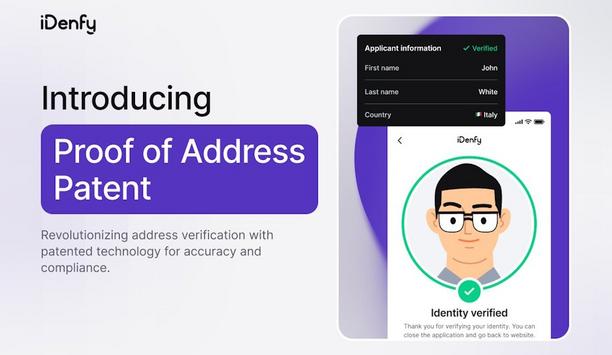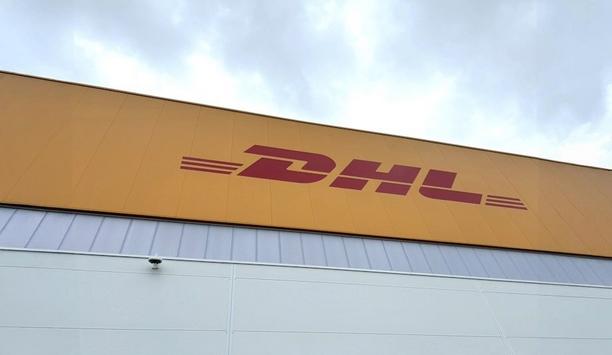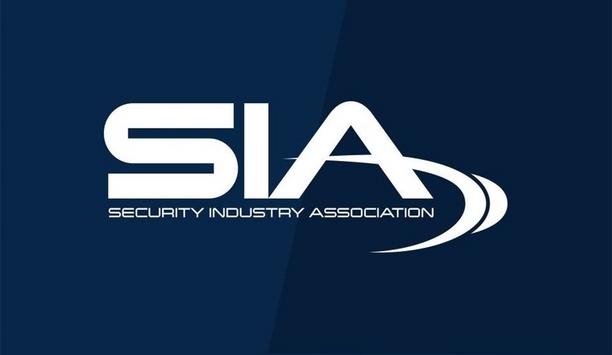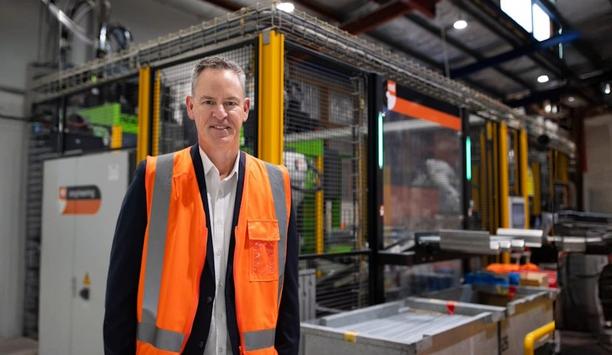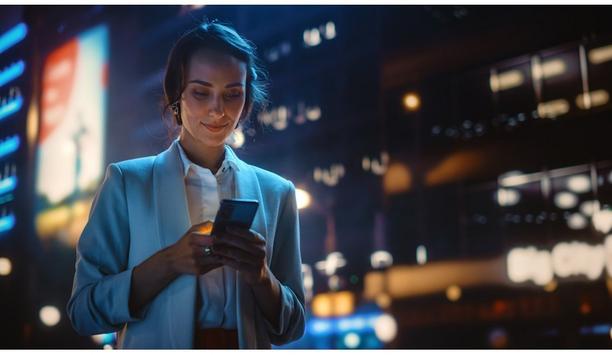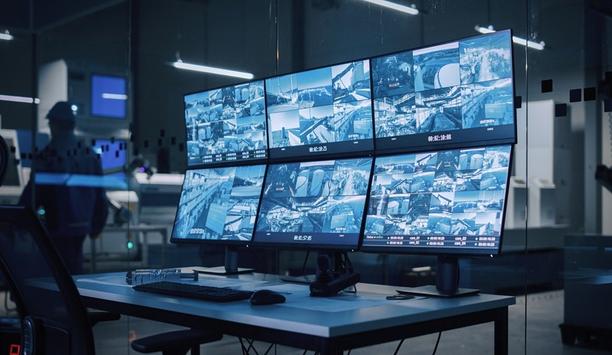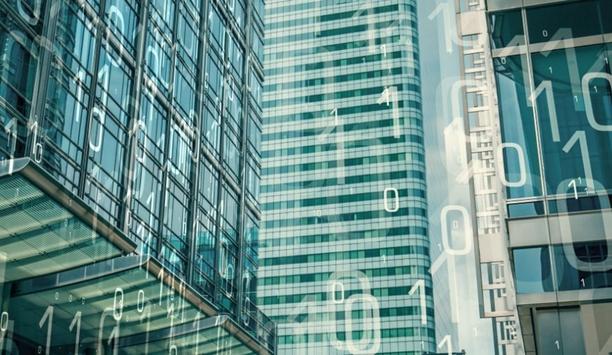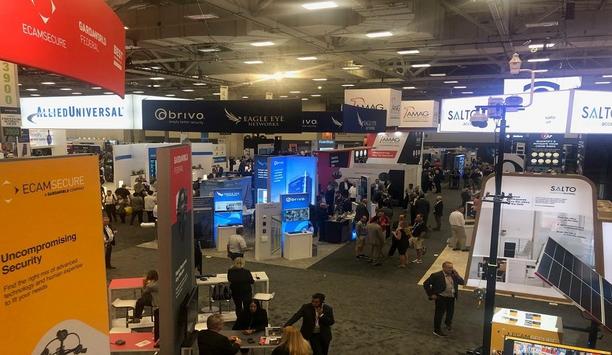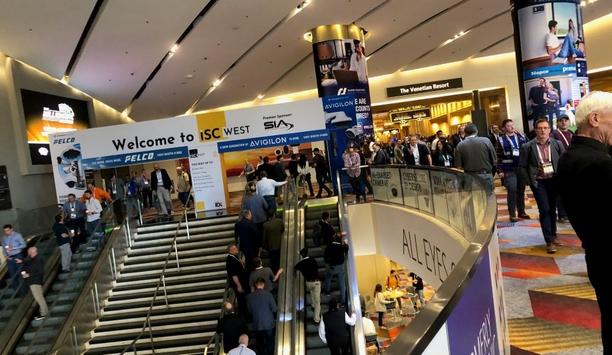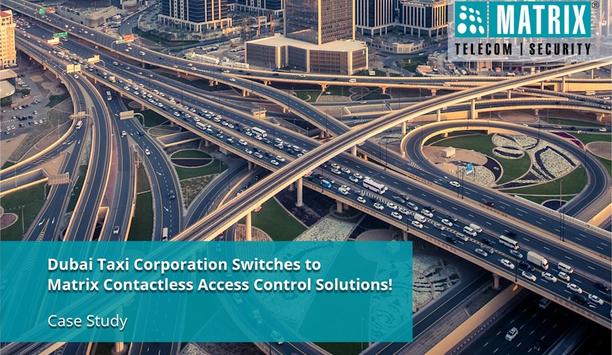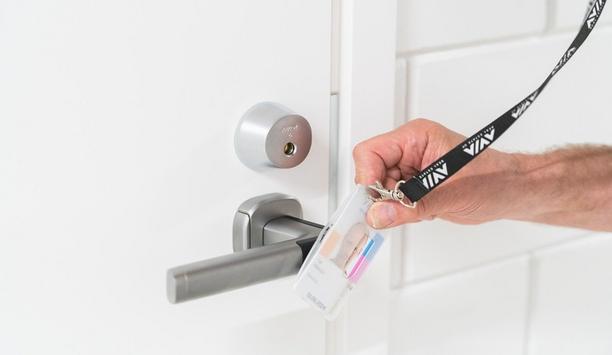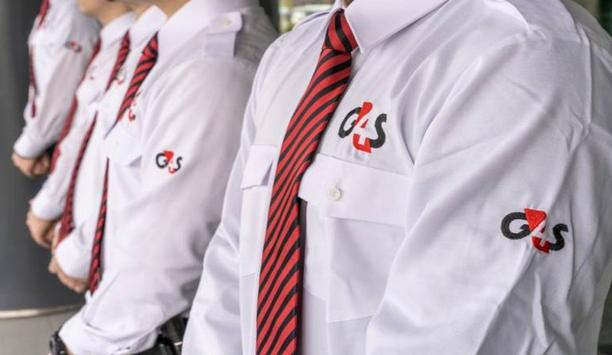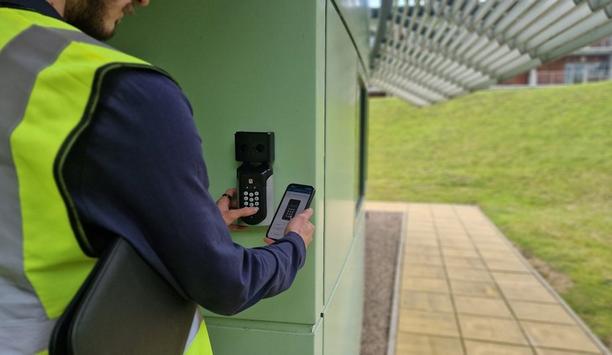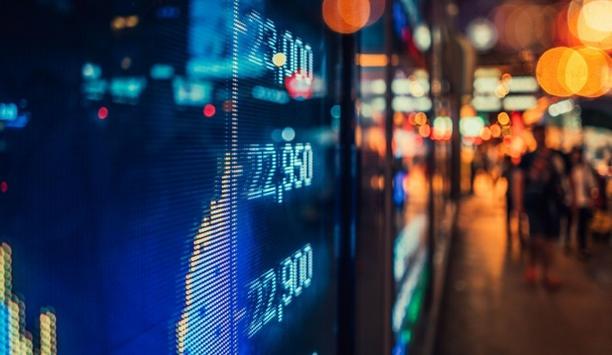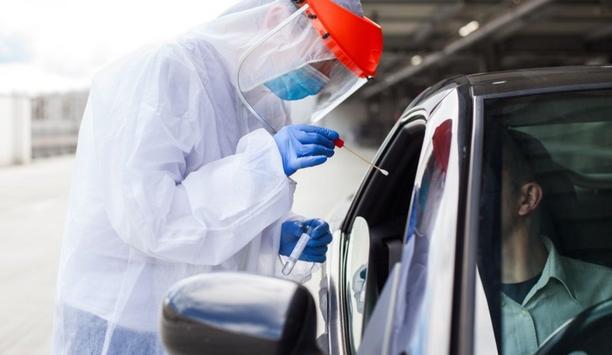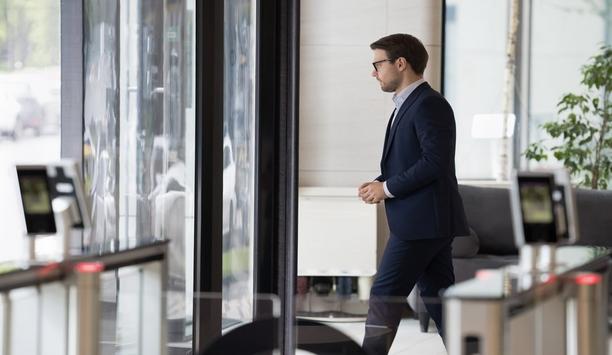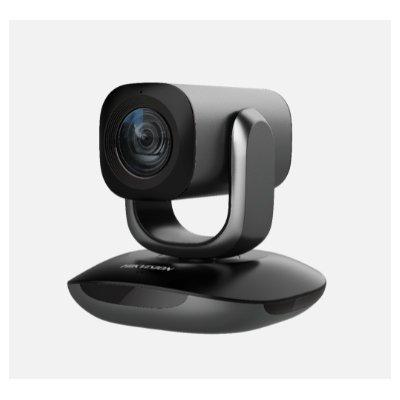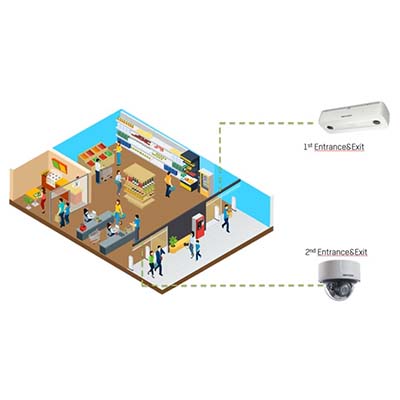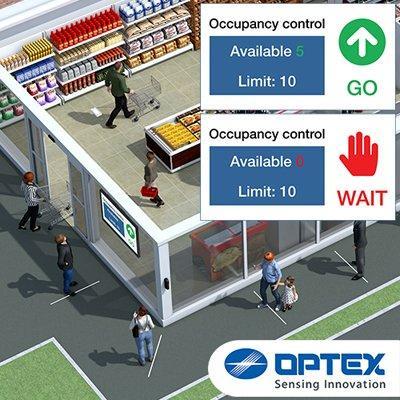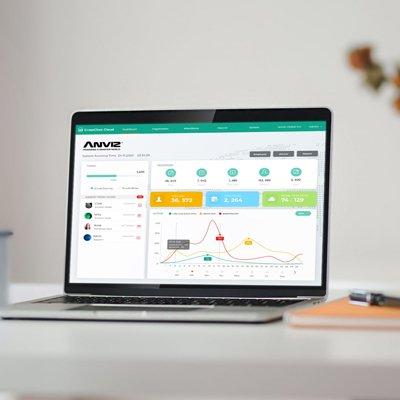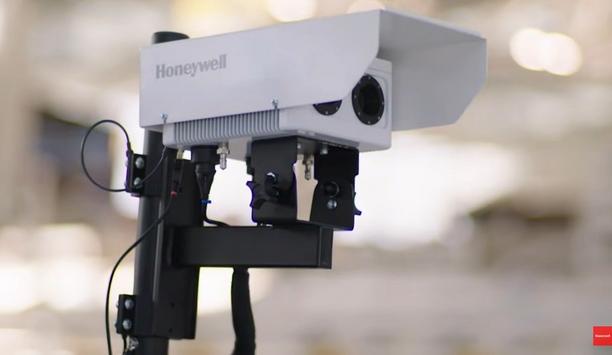COVID-19
“Win on the transition” is a term the author heard for the first time several years ago. The author has written about it and I have conducted numerous public presentations on the topic. Since then, they have observed companies both win and lose on “transitions” across various industries. Some of these transitions are brought about by innovation, economic conditions, or, most recently, a worldwide pandemic. SAAS Alerts can all think of companies that have supercharg...
Custom Intelligent Security specializes in risk analysis, system design, installation, and maintenance of unified high-security solutions. Their extensive portfolio includes Government, commercial, and enterprise-level clients who demand scalable, secure, and robust security solutions. Next-generation security solutions barox Kommunikation is delighted to announce its partnership with Custom Intelligent Security barox Kommunikation is delighted to announce its partnership with Custom Intelli...
The 8th edition of Inter Airport Southeast Asia (IASEA) was held in Singapore from 25-27 March 2025. Spanning across 6,259 sqm of exhibition space, the airport exhibition and conference brought together 3,621 industry trade professionals from 53 countries and regions, and featured 134 exhibiting companies, including pavilions representing Germany, Italy, Japan, and Singapore. The event saw a 43% increase in exhibitor size and a 15.6% rise in attendee numbers, underscoring the rising significanc...
As the world emerges from the pandemic's shadow five years after it spread globally, everything seems to be back on track. Air travel volumes have matched and even surpassed the pre-COVID level. But are they truly “back”? The pandemic did more than just bring masks and border closures. It fundamentally reshaped the world, accelerating digitalization beyond recognition and irrevocably redefining security paradigms and human behavior. Heightened security concerns Standard solutions...
VIVOTEK, the pioneering security solution provider, has been committed to safeguarding communities and building a sustainable future since its founding in 2000. With "Care" as its core value, the company integrates cutting-edge security technologies to foster a safer and more sustainable world. Marking its 25th anniversary, VIVOTEK has unveiled its anniversary slogan, “MAKE TOMORROW EASIER, TODAY!” along with a refreshed brand identity, emphasizing its focus on AI and cloud-driven s...
The practice of executive protection changed forever on Dec. 4, 2024, when UnitedHealthcare CEO Brian Thompson was shot outside a Manhattan, New York, hotel. The shocking event raised awareness in board rooms around the world about the need for, and challenges of, executive protection. Questions followed immediately, including why was the high-level executive not protected? Combination of risk and reward UnitedHealthcare’s stock price has gone down more than 20% since the shootin...
News
iDenfy, a global pioneer in RegTech services, has filed its first patent for an innovative address verification technology. The patent, published in 158 countries by the World Intellectual Property Organization (WIPO), introduces a novel method for verifying a user’s address data. It aims to set a new standard for reliability and security, help businesses combat fraud, and more effectively prevent document forgery. Traditional address verification methods Traditional address verification methods, such as requiring utility bills or other Proof of Address (PoA) documents have long been exploited by fraudsters using forged or altered information. These outdated methods create vulnerabilities, especially for high-risk businesses across industries like banking, increasing the risk of fraud and non-compliance with strict regulatory rules, which require users to undergo more stringent Know Your Customer (KYC) checks, including verifying address data. Address Verification solution iDenfy’s new approach significantly increases the accuracy and reliability of how companies verify their customers’ data The iDenfy’s Address Verification solution sends a physical letter containing secure credentials to the user-provided residential address. Once the letter is received, the user uses secured credentials to initiate the identity verification process and confirm identity and physical access to the address. By combining physical and digital layers of the standard verification process, iDenfy’s new approach significantly increases the accuracy and reliability of how companies verify their customers’ data, mostly key onboarding information, such as their full name, date of birth, and residential address information. Proof of Address Verification According to Domantas Ciulde, the CEO of iDenfy, the company’s innovative method of Proof of Address verification will help companies eliminate dangers by providing a secure verification alternative, reducing the risk of approving forged address information. “Our new approach ensures that applicants cannot tamper with their address verification." Fraud prevention "By sending a physical letter with secure credentials to the customer's address, we validate access through an identity verification process initiated upon receipt of the letter. This approach sets a new standard for address verification reliability.” This method is highly valuable for businesses. It enhances fraud prevention by improving reliability and accuracy, streamlines the onboarding process, increases user success rates, and ensures compliance with regulations. Most importantly, it achieves all this without limiting the company’s ability to scale globally, said D. Ciulde. PoA process Median losses from the fraud cases analyzed in 2024’s report increased by 24% compared to the previous years With applications across financial services, e-commerce, gig economy platforms, and more, iDenfy’s Address Verification provides a globally applicable solution. This is worth mentioning, as the need for robust PoA processes has never been more critical. According to the Association of Certified Fraud Examiners, median losses from the fraud cases analyzed in 2024’s report increased by 24% compared to the previous years, with fraud still being an issue since the pandemic. Identity verification “Our mission has always been to provide unique tools for identity verification." "This new patent is proof of our commitment to addressing various challenges and building robust fraud prevention strategies tailored to different markets and specific use cases,” added Domantas Ciulde.
iDenfy, a global pioneer in RegTech services, has filed its first patent for an innovative address verification technology. The patent, published in 158 countries by the World Intellectual Property Organization (WIPO), introduces a novel method for verifying a user’s address data. It aims to set a new standard for reliability and security, help businesses combat fraud, and more effectively prevent document forgery. Verification methods Traditional address verification methods, such as requiring utility bills or other Proof of Address (PoA) documents, have long been exploited by fraudsters using forged or altered information. These outdated methods create vulnerabilities, especially for high-risk businesses across industries like banking, increasing the risk of fraud and non-compliance with strict regulatory rules, which require users to undergo more stringent Know Your Customer (KYC) checks, including verifying address data. iDenfy’s new approach iDenfy’s Address Verification solution sends a physical letter containing secure credentials to the user The iDenfy’s Address Verification solution sends a physical letter containing secure credentials to the user-provided residential address. Once the letter is received, the user uses secured credentials to initiate the identity verification process and confirm identity and physical access to the address. By combining physical and digital layers of the standard verification process, iDenfy’s new approach significantly increases the accuracy and reliability of how companies verify their customers’ data, mostly key onboarding information, such as their full name, date of birth, and residential address information. New standard for address verification According to Domantas Ciulde, the CEO of iDenfy, the company’s innovative method of Proof of Address verification will help companies eliminate dangers by providing a secure verification alternative, reducing the risk of approving forged address information. “Our new approach ensures that applicants cannot tamper with their address verification. By sending a physical letter with secure credentials to the customer's address, we validate access through an identity verification process initiated upon receipt of the letter. This approach sets a new standard for address verification reliability.” Need for robust PoA processes With applications across financial services, iDenfy’s Address Verification provides a globally applicable solution This method is highly valuable for businesses. It enhances fraud prevention by improving reliability and accuracy, streamlines the onboarding process, increases user success rates, and ensures compliance with regulations. Most importantly, it achieves all this without limiting the company’s ability to scale globally, said D. Ciulde. With applications across financial services, e-commerce, gig economy platforms, and more, iDenfy’s Address Verification provides a globally applicable solution. This is worth mentioning, as the need for robust PoA processes has never been more critical. Robust fraud prevention strategies According to the Association of Certified Fraud Examiners, median losses from the fraud cases analyzed in this year’s report increased by 24% compared to the previous years, with fraud still being an issue since the pandemic. “Our mission has always been to provide unique tools for identity verification. This new patent is a proof of our commitment to addressing various challenges and building robust fraud prevention strategies tailored to different markets and specific use cases,” added Domantas Ciulde.
DHL Express, a global pioneer in logistics and transportation, prioritizes safety across its operations. Faced with increasing demands, including those tied to TAPA certification, the company sought reliable solutions to protect its infrastructure, employees, and customer parcels. In September, shortly after the inauguration of a new logistics site in Caen, France, the Hanwha Vision team met with Fabien Vimont, DHL Express Security Director. Needs of DHL Express According to Vimont, Hanwha Vision stood out with a comprehensive and high-performing offering: “Hanwha Vision is clearly a prominent player in the video surveillance sector today. Their cameras provide some of the best features on the market, making their solution an obvious choice for us.” Hanwha Vision addresses DHL Express’s needs through: A wide range of cameras suited for all environments (close range, long distance, day, night, warehouses, offices). Effective after-sales support, ensuring product availability even during critical periods such as the COVID-19 pandemic. A five-year warranty, demonstrating the robustness and durability of the equipment. “This offering and service align perfectly with our needs. A key differentiator was the availability of products, particularly during the COVID-19 pandemic, which reassures us,” explained Vimont. Features to enhance DHL Express Key features that enhance DHL Express’s security include: Precision: Bullet cameras capturing every detail. Wide-area surveillance: Comprehensive coverage of spaces through multi-sensor cameras. Tracking: Dome cameras linking video surveillance with scanned barcodes, enabling swift parcel tracking. TAPA’s requirements Certification grants full coverage of indoor and outdoor spaces to detect any intrusion attempts “We use our CCTV systems for investigations and to address vulnerabilities,” noted Vimont. “For instance, we can isolate an image of a specific parcel.” DHL Express is TAPA-certified, an international standard for logistics security. This certification mandates complete coverage of both indoor and outdoor spaces to detect any intrusion attempts. “We comply with TAPA’s requirements. Every person, from entering the premises to reaching the building, is detected, which is crucial for us,” stated Vimont. Integration of Hanwha Vision solutions The integration of Hanwha Vision solutions has allowed DHL Express to strengthen its security systems, ensure better traceability of parcels, and effectively investigate incidents. “Today, Hanwha Vision has become an integral part of our security measures,” concluded Vimont. Through this partnership, DHL Express optimizes the safety of its facilities while meeting the strictest standards, solidifying its position as a pioneer in the logistics industry.
Trade Show Executive (TSE) has named ISC West as The Greatest Trade Show of 2023 at the 2024 TSE Gold 100 Awards & Summit. This prestigious awards program recognizes trade shows across various industries that were the largest and most ahead of the curve in innovative approaches in 2023. The event celebrated not only the winners but also the robust recovery of the trade show industry since the pandemic. Innovative programming “The ISC West team is honored to be recognized as The Greatest Trade Show of 2023 by Trade Show Executive Magazine,” said Mary Beth Shaughnessy, ISC Event Vice President. “Every year, we are committed to delivering a standout show with innovative programming to create an unrivaled customer experience. With a show floor of almost 250,000 square feet, we were proud to meet both our exhibitors and attendees with an expanse of offerings that keep them coming back year after year.” Security challenges ISC West addressed society’s most pressing security challenges throughout the four-day event Held at The Venetian Expo in Las Vegas, in collaboration with premier sponsor the Security Industry Association (SIA) and hosted by RX, ISC West 2023 showcased an environment where innovation and creativity came to life. As safety continues to dominate headlines, ISC West addressed society’s most pressing security challenges throughout the four-day event and broadened the industry’s horizon to bring the most advanced products, services, and solutions to security novices and experts alike. Physical and cybersecurity challenges In 2023, attendees had the opportunity to engage with industry experts, make professional connections, share valuable insights, and explore the most cutting-edge solutions to physical and cybersecurity challenges in a hands-on setting. ISC West 2023 welcomed over 27,000 security industry professionals, including more than 650 exhibitors displaying their latest technologies. Post-show attendance numbers totaled over 18,000 attendees alone, marking an increase of 56.2% from ISC West 2022. Additionally, the 2023 show saw an 89.6% increase from 2022 for SIA Education@ISC session attendance. As an industry very eager to return to in-person events, ISC West 2023 experienced significant growth with heavy foot traffic on the show floor from open to close. ISC West 2023 highlights The Bridge Enhancements came to life at the revamped space known as The Bridge, the main stage destination In 2023, ISC West significantly elevated the look and feel of the event, and these enhancements came to life at the revamped space known as The Bridge, the main stage destination. Here, attendees experienced the immersive nature of the safety and security industry, replete with thought-provoking speakers and special events throughout the show. Career Zone The Career Zone was introduced at ISC West 2023. This area on the show floor focused on professional growth and workforce development. The Career Zone also catered to young professionals and next-gen pioneers of the security industry. With this objective, sessions focused on mentorship and skills workshops so attendees could bring what they learned into their own workplaces. SIA New Products + Solutions Awards Showcase The SIA NPS Awards display area underwent a design and layout transformation at ISC West 2023, strategically highlighting the most innovative products and solutions on the market. It also featured a new visitor-led scanning technology, Colleqt, where attendees could scan exhibitors’ QR codes to learn more about their security technologies on display. SIA Education@ISC West When it comes to industry education, ISC West continues to grow and evolve and the security field When it comes to industry education, ISC West continues to grow and evolve alongside the security field. With that in mind, ISC West updated its annual education offerings to provide the best and most up-to-date experience possible. SIA Education@ISC hosted over 85 sessions – all with content curated around 2023 Megatrend topics and focusing on Cybersecurity, which was the #1 Megatrend of the year. ISC West 2023 With 200+ speakers, more than 650 exhibitors, 85+ education sessions, and 27,000 industry professionals spanning 248,000 square feet, ISC West 2023 established its show floor as the place where people want to be and stay. Offering a combination of products, educational programming, and networking opportunities all under one roof cemented ISC West as the premier destination to showcase innovation and illustrate where the industry is moving next. Already making plans for next year? Save the date for ISC West 2025, held March 31–April 4 at The Venetian Expo in Las Vegas where security professionals can continue to experience the largest and most dynamic industry trade event of the year.
Trade Show Executive (TSE) has named ISC West as The Greatest Trade Show of 2023 at the 2024 TSE Gold 100 Awards & Summit. This prestigious awards program recognizes trade shows across various industries that were the largest and most ahead of the curve in innovative approaches in 2023. The event celebrated not only the winners but also the robust recovery of the trade show industry since the pandemic. ISC West 2023 Held at The Venetian Expo in Las Vegas, in collaboration with premier sponsor the Security Industry Association (SIA) and hosted by RX, ISC West 2023 showcased an environment where innovation and creativity came to life. As safety continues to dominate headlines, ISC West addressed society’s most pressing security challenges throughout the four-day event and broadened the industry’s horizon to bring the most advanced products, services, and solutions to security novices and experts alike. In 2023, attendees had the opportunity to engage with industry experts, make professional connections, share valuable insights, and explore today’s most cutting-edge solutions to physical and cybersecurity challenges in a hands-on setting. 89.6% increased attendance ISC West 2023 experienced significant growth with heavy foot traffic on the show floor from open to close ISC West 2023 welcomed over 27,000 security industry professionals, including more than 650 exhibitors displaying their latest technologies. Post-show attendance numbers totaled over 18,000 attendees alone, marking an increase of 56.2% from ISC West 2022. Additionally, the 2023 show saw an 89.6% increase from 2022 for SIA Education@ISC session attendance. As an industry very eager to return to in-person events, ISC West 2023 experienced significant growth with heavy foot traffic on the show floor from open to close. Customer experience “The ISC West team is honored to be recognized as The Greatest Trade Show of 2023 by Trade Show Executive Magazine,” said Mary Beth Shaughnessy, ISC Event Vice President. “Every year, we are committed to delivering a standout show with innovative programming to create an unrivaled customer experience. With a show floor of almost 250,000 square feet, we were proud to meet both our exhibitors and attendees with an expanse of offerings that keep them coming back year after year.” ISC West 2023 highlights The Bridge: In 2023, ISC West significantly elevated the look and feel of the event and these enhancements came to life at the revamped space known as The Bridge, the main stage destination. Here, attendees experienced the immersive nature of the safety and security industry, replete with thought-provoking speakers and special events throughout the show. Career Zone: The Career Zone was introduced at ISC West 2023. This area on the show floor focused on professional growth and workforce development. The Career Zone also catered to young professionals and next-gen leaders of the security industry. With this objective, sessions focused on mentorship and skills workshops so attendees could bring what they learned into their workplaces. SIA New Products + Solutions Awards Showcase: The SIA NPS Awards display area underwent a design and layout transformation at ISC West 2023, strategically highlighting the most innovative products and solutions on the market. It also featured a new visitor-led scanning technology, Colleqt, where attendees could scan exhibitors’ QR codes to learn more about their security technologies on display. SIA Education@ISC West: When it comes to industry education, ISC West continues to grow and evolve alongside the security field. With that in mind, ISC West updated its annual education offerings to provide the best and most up-to-date experience possible. SIA Education@ISC hosted over 85 sessions – all with content curated around 2023 Megatrend topics and focusing on Cybersecurity, which was the #1 Megatrend of the year. ISC West 2025 With 200+ speakers, more than 650 exhibitors, 85+ education sessions, and 27,000 industry professionals spanning 248,000 square feet, ISC West 2023 established its show floor as the place where people want to be–and stay. Offering the combination of products, educational programming, and networking opportunities all under one roof cemented ISC West as the premier destination to showcase innovation and illustrate where the industry is moving next. Already making plans for next year? Save the date for ISC West 2025, held March 31 – April 4 at The Venetian Expo in Las Vegas where security professionals can continue to experience the largest and most dynamic industry trade event of the year.
Global security manufacturer, Gallagher Security has a proud history of delivering its solutions to the world with uninterrupted movement and the assurance they can ship 95% of purchase orders the next day, worldwide. On the eve of World Manufacturing Day on October 4, Gallagher, a frequent award-winner for its manufacturing prowess, acknowledges its vertically integrated manufacturing and engineering capabilities which are backed by more than 86 years of entrepreneurial spirit. Emerging challenges Gallagher can reply to emerging challenges resulting in shorter lead times, ensure quality Gallagher Security Chief Executive, Mark Junge says, “Because our solutions are designed, engineered, manufactured, and distributed from our head office site in Hamilton, New Zealand, we have complete oversight of manufacturing and distribution, ensuring we maintain quality, and can quickly and easily make changes, invest in raw materials, and implement strategies to ensure continued availability.” With control over the full supply chain, Gallagher can rapidly respond to emerging challenges resulting in shorter lead times, guaranteed quality, full visibility, and the ability to deliver on demand. Customer-centric approach Such was the case with events of recent years which hit manufacturers around the world hard. The COVID-19 pandemic and associated supply chain and shipping complications pushed Gallagher to re-engineer its products with parts they could access to ensure continued supply. It’s this ability to pivot and their commitment to relentless innovation that minimizes the risk of third-party limitations and global risks to people and organizations,’ echoing their customer-centric approach and putting people at the heart of everything they do. Five manufacturing awards Gallagher awarded a further three awards at the Fire and Security Matters Awards And the world is watching. In 2023 alone, Gallagher took home five manufacturing awards across Australia, the United States, and the United Kingdom at the Australian Security Industry Awards, US, and UK OSPAs (Outstanding Security Performance Award), Security and Fire Matters, and Fire and Security Matters awards, respectively. Already in 2024, Gallagher has been awarded a further three Manufacturing awards at the Fire and Security Matters Awards, UK OSPAs, and most recently, at the US OSPAs in Orlando last month. Continuous improvements Mark concludes: “We are fortunate to have a brilliant team focused on continuous improvements to the way we plan, procure, manufacture, and distribute our products." "The depth of knowledge and experience in our people is what drives exceptional outcomes for our customers”.


Expert commentary
In the early stages of childhood education, kindergarten imparts foundational principles that shape future behavior. Today, you can think about cloud computing in a similar manner: it has become a fundamental element in the architecture of modern technology. The cloud now plays a critical role in digital interaction, security, and infrastructure development. Far from being just another tool, the cloud is a cornerstone, providing essential support for the intricate network that supports today's digital ecosystem. Vomplex digital systems Much as kindergarten lessons lay the groundwork for cognitive development, the cloud offers base capabilities that are vital for constructing and operating complex digital systems. Recent advancements in cloud-based security — particularly in access control and video surveillance — emphasize the importance of cloud computing. It has been instrumental in unifying fragmented security systems, similar to how basic social principles taught in kindergarten help diverse children come together as a unit. The role of cloud computing in our technological world is multifaceted and continuously growing The role of cloud computing in our technological world is multifaceted and continuously growing. It has evolved into a space where innovation is cultivated and security commitments are maintained with vigilance. The fusion of artificial intelligence and analytics into cloud services signifies a concerted effort toward a future that is more cohesive, intelligent, and secure. Significant technological progress As we delve deeper into this topic, it will become evident that cloud computing, like the pivotal lessons of kindergarten, is indispensable. It quietly enables significant technological progress, mirroring the foundational principles taught in our formative years in both its essential nature and its growing influence. Play Fair: Technological Developments in Cloud-Based Security The past year has been a period of significant innovation in cloud-based access control and video surveillance. Cloud computing has evolved into a robust platform that fosters the creation of integrated security systems. These systems consolidate access control and video surveillance into a unified experience, demonstrating the cloud's potential to seamlessly combine disparate systems. Substantial industry progression The advent of edge computing has boosted bandwidth efficiency and accelerated data processing The incorporation of artificial intelligence and analytics into cloud services marks a substantial industry progression. This development provides businesses with advanced tools for in-depth analysis and intelligent decision-making, enabling them to not only gather comprehensive insights but also strengthen their security measures. The cloud has eased the transition to new technologies and emphasized a commitment to cybersecurity, with encryption protecting data integrity in transit and at rest. Simultaneously, the advent of edge computing has boosted bandwidth efficiency and accelerated data processing, highlighting a consistent drive to refine and adapt. The trend of integrating cloud security systems with other business platforms help create unified ecosystems, reflecting a broader narrative of security professionals’ pursuit of progress and enhancement. Potential future disruptions Wash Your Hands: Pandemic-Induced Transformation in Cloud Services As we all know, the COVID-19 pandemic necessitated a swift transition to remote operations, with cloud computing forming the backbone. i The urgent need for cloud solutions was apparent as businesses adopted remote collaboration tools, work-from-home policies, and virtual workspaces. This transition increased the demand for cloud services and prompted more adaptable and cost-effective pricing models. Recognizing the critical role of cloud services, organizations enhanced their investment to safeguard operations against potential future disruptions. The pandemic fundamentally altered the perception and valuation of cloud computing, emphasizing its critical role in sustaining business operations. Scaleable digital infrastructures The growing demand for SaaS has led integrators to create scaleable digital infrastructures Share Everything: Systems Integrators and the Adoption of Cloud Systems integrators have done much to realize the cloud’s potential. The growing demand for Software as a Service (SaaS) has led integrators to create scaleable digital infrastructures tailored to specific business needs.. The use of the cloud for data backup has improved efficiency and increased organizations’ ability to cope with disruptions. Although there has been a gradual shift among integrators toward cloud solutions, effectively marketing and supporting SaaS business models remains a challenge. But the possibility of continuous revenue streams through managed services is promoting broader adoption of cloud technologies. Cloud-based security solutions Live, Learn, Think: Enterprise-Level Cloud Adoption There is an increasing trend among large enterprises to adopt cloud-based security solutions. The shift toward VSaaS indicates a move towards subscription models that offer financial and scalability advantages. This transition is more than a mere operational change. Rather, it represents a commitment to the expansive potential for growth and innovation that the cloud offers. But let’s face it: the ‘cloud’ journey is accompanied by challenges, particularly concerning data security. Providers must deliver robust data protection measures to ensure the success of cloud-based security services, which depends not just on technological progress but also on fostering trust with clients. Addressing cybersecurity concerns The hybrid model offers a balanced solution for businesses looking to merge these two environments Baby Steps: Hybrid Cloud and On-Premises Infrastructure The hybrid model, which combines cloud with on-premises infrastructure, continues to be a strategic choice for many organizations. While the cloud provides flexibility and ease of access, on-premises solutions offer control over data security and comply with regulatory demands. The hybrid model offers a balanced solution for businesses looking to merge these two environments. Be Trustworthy: Cybersecurity Measures and Communication Transparent communication is key in addressing cybersecurity concerns with customers and partners. Companies that are transparent about their security protocols, including encryption and regular updates, build trust. Certifications such as SOC 2 Type II affirm a dedication to security, and proactive educational resources ensure that users are well-informed about best practices. Decision-making processes Cloud computing has become the cornerstone of modern security strategies Look: The Future Outlook for Cloud-Based Security Solutions Looking forward 5-10 years, cloud-based security solutions are expected to become even more central to organizational decision-making processes. The cloud is poised to become the hub for predictive decision-making, using AI algorithms and extensive data to proactively manage security risks. This vision of an intelligent, integrated approach to security, with the cloud enabling swift, collaborative responses to threats, is almost at hand. Cloud computing has become the cornerstone of modern security strategies, moving beyond its initial role as a digital transformation tool. As we look to the future, the cloud is set to redefine security paradigms and anchor a new era of intelligent, predictive security operations.
When a bomb detonated in the Port of Beirut, I had hundreds of employees under my care inside the blast zone. Within just two hours, I was able to determine who was impacted, understand their safety conditions, and share resources for on-the-ground support—all thanks to mobile technology. For Chief Security Officers, receiving calls like these launches a variety of protocols and necessary decision-making with the safety and security of people and assets as a top priority. And these calls are only becoming more common. Dependence on threat intelligence Mobile phones have dominated the post-COVID environment where people work from anywhere Threats ranging from natural disasters to geopolitical conflicts are becoming more frequent and complicate the responsibility organizations have in keeping their people safe. To meet these needs CSO’s are staying ahead of negative outcomes through creating a greater dependence on threat intelligence. In these times, effective, real-time risk management depends on hyper-local data from technology that is accessible, portable, and dynamic – such as cell phones. Mobile phones have revolutionized the way people live and work. They allow us all to walk around with a computer in our pocket, bringing the world to our fingertips and eliminating digital borders for over 90% of the world's population. Mobile phones have dominated the post-COVID environment where people work from anywhere and have geographically distributed teams but are also more vulnerable to threatening events. Mobile-friendly risk management platforms Mobile technology assigns workers with easy entry to data that can help keep them and their teams safe As we approach 2024, many organizations are adopting comprehensive risk management tools that empower personnel across the organization with the intelligence and knowledge they need to stay safe wherever they are. Mobile-friendly risk management platforms, such as Crisis24 Horizon, provide always-on awareness, on-hand threat intelligence, and immediate communications and distress signaling through location monitoring. Users receive location risk assessments and push notifications directly to their devices about nearby issues and threats no matter if they are on or off the job. While only select risk managers have complete control of the platform and all sensitive employee data is protected through encryption, the app distributes critical intel to foster a culture of shared awareness and responsibility. Thus, mobile technology empowers employees with easy access to information that can help keep them and their teams safe. Creating a culture of mobile technology adoption In the last few years, the world has proven the importance of being well-informed of risks and mitigation plans to minimize harm. However, psychological barriers tend to trump physical barriers when it comes to accessing the vast array of tools our mobile devices offer. World has proven the matter of being well-informed of risks and relief plans to minimize harm Adopting this technology and establishing a culture that enforces risk management across an organization is a daunting challenge that demands substantial commitment from leadership to be successful. Some companies have tackled this challenge by positioning security technology as part of the organization’s employee benefits package, such as commuter benefits and health insurance, to encourage people to take advantage of these resources and learn how to use them. Cohesive risk management culture Technology is only as effective as the people whose actions it informs, which is why adoption and integration are so important. When a cohesive risk management culture meets a powerful technology platform, individuals are enabled to receive threat alerts and counter their impacts, letting others know when and how to take the necessary precautions to protect themselves and their team. For more information on mobile technology and other security trends, check out the Global Risk Forecast, an annual report by Crisis24 that provides a comprehensive analysis of key events around the world most likely to affect operations in the coming year.
If you were to ask people outside our industry what door and access security entails, chances are their answers would reflect their common encounters with locks, security guards, cameras, and maybe metal detectors, badges, or automatic doors. But if they were curious enough, they’d probably be astounded to learn how extensive, intricate, and interesting the business can be and, of course, how vital it is to life safety, physical security, and cybersecurity. Integrated, interoperable solutions They’d also discover that it’s not just about levers, deadbolts, and other products. Instead, it’s a system of many systems, integrated, interoperable security solutions that cover everything from access control, video surveillance, fire alarms, and communications to server rooms, IT networks, energy efficiency, and more. Partnerships to keep up with changing needs A manufacturer’s support of their customers is how prepared they are to respond with high-quality advice Integral to the future success of the openings solutions industry is how well manufacturers and security experts keep up with the changing threat landscape and their customers’ evolving needs. Part of a manufacturer’s support of their customers is how prepared they are to respond with high-quality advice, service, and innovations that address the questions and concerns that arise. That’s why more developers, designers, and end-users alike are leaning on partnerships with visionary manufacturing companies and systems integrators who proactively keep their ear to the ground and an eye on the future. Caution: curves ahead As we look toward that future here in North America, there will always be forces of change to contend with and the accompanying impact on people’s safety, security, health, and livelihoods that our industry will need to address. The forces range from the incessantly unfolding threat scenarios in our country and the world’s geo-political dynamics to climate change and a host of other shifting factors, including the ways we want to work post-pandemic. Bypassing tailored approach Commoditization poses risks to customized systems integration, good design, the environment Like many industries, ours has seen a change in the level of commoditization in recent years. While this may give some customers access to cheaper door products in the short term, it usually means bypassing a tailored and more effective approach to security solutions that better meet risk assessment needs for the long haul. It can also get in the way of fulfilling a customer’s forward-thinking requirements for sustainable and aesthetic building materials. In other words, commoditization, with its tendency toward “sameness” and dependency on less sustainable, corner-cutting materials and processes, poses risks to customized systems integration, good design, the environment, and potentially security itself. Change for the better Fortunately, change has its upside, especially as it applies to innovation, the counterforce to commoditization. It’s the primary reason why progressive architects, integrators, and security professionals in North America keep gravitating to manufacturers with the instincts and resources to make bold investments in people, new ideas, and processes that produce advanced, planet-friendly solutions. From our view of the door security industry, sustainability will be a central component of innovation from here on out, where the development of new solutions and products is guided by practices and values that reduce their environmental footprint and increase their positive impact. Sustainably-made solutions Transparency in the form of documentation and third-party certifications to back up sustainability claims Along with being a top-down priority for certain manufacturers, sustainably made solutions and products are in higher demand than ever from the design, building, security, and end-user communities. They want to know about the carbon footprint and health impact of product ingredients, their recyclability, and how responsibly things are being made, packaged, and delivered. And they expect transparency in the form of documentation and third-party certifications to back up sustainability claims. Resilience Along with sustainability, a greater focus on resilience has emerged. Climate change is being looked at as a key contributor to the increase in wildfires and the intensity of windstorms and flooding. There will continue to be an expanding need moving forward for FEMA-rated storm shelters, fire- and water-resistive doors, and even blast-resistant openings for certain locations. On the near horizon Facial recognition has long been in use in government and other high-security applications The door security industry is also seeing a fusion of technologies, including newer touchless/contactless opening solutions that incorporate improved biometric access credentials like facial recognition. Facial recognition has long been in use in government and other high-security applications, and we’re starting to see more adoption and willingness to use advanced biometrics devices for door access. Video sensing data and analytics Fortunately, there are new strides regarding the transparency of the algorithms relating to facial recognition. Reassurances about the prevention of bias will help further that adoption. Voice and video will also soon become more prevalent for building and security management by using video sensing data and analytics to inform door security solutions. These developments often stem from the convergence of application engineering and systems integration. Application engineering It also advances the de-commoditisation of security and access control solutions Openings solutions innovators and manufacturers receive vital feedback and insight from both channel partners and customers about the characteristics of a vertical market and/or region. Not only does this partnership require trust and close working relationships, but it yields near and longer-term advantages to all participants. It also advances the de-commoditization of security and access control solutions. Serving underserved communities Smaller businesses need to manage the security and safety of their personnel and assets just as larger operations do. The challenge has been how to offer the right fit of robust door security solutions that also fit these organizations’ budgets. Historically, they’ve been caught between having to choose an enterprise system that would provide the security they need but comes with a high price tag or settling for mechanical locking doors and a fire alarm system that will at least satisfy a certificate of occupancy requirement. Smart lock system Many small business owners want technology that’s simple to install, even DIY in some cases Many small business owners would like to add a smart lock system to enhance their company’s security which also gives them the flexibility to issue mobile credentials and manage employee and visitor access remotely. Ultimately, they’re looking for a higher level of functionality than what’s available at the low end but something with far less infrastructure and at a lower cost than what’s inherent with higher-end solutions. They also want technology that’s simple to install, even DIY in some cases. Scalable electronic access control Supporting these underserved customers requires developing scaled solutions to match the fewer doors, employees, and amount of space that smaller businesses need. This unique approach to electronic access control is new, but it’s already proving to be successful in helping organizations better manage their time, resources, and security. Training The need for expanded solutions awareness, product knowledge, and installation training is also growing The need for expanded solutions awareness, product knowledge, and installation training is also growing. Retirements and other changes within the locksmithing, systems integration, and facilities management sectors continue to affect how our industry needs to recruit, develop, and retain talent. So do technological advancements in electronic access control and door security hardware overall. Change, innovation, and learning A manufacturer or organization that can offer comprehensive training led by seasoned professionals will go a long way toward expediting the onboarding of new hires and providing continuing education for experienced professionals at all levels and from all disciplines connected to safety and security. Ultimately, door security experts and companies who embrace change, innovation, and learning will gain the extra edge customers are always looking for to add value to their investments in security.
Security beat
An attention-grabbing exhibit at GSX 2024 in Orlando involved a robot dog that could open a door. Boston Dynamics robot dog ASSA ABLOY impressed attendees with the robotics demonstration, featuring the Boston Dynamics robot dog that could open a door using either an HID credential or a mechanical grip. This innovation represents a shift toward more autonomous security solutions and is suitable for environments where human access may be limited. ASSA ABLOY impressed attendees with the Boston Dynamics robot dog Operational efficiency Eye-catching exhibits at the GSX in Orlando, showcasing the future of security technology It was one of many eye-catching exhibits at the GSX in Orlando, showcasing the future of security technology, and offering practical solutions to the industry's challenges. For security professionals, the advancements presented opportunities to enhance operational efficiency and to maintain a proactive stance in a rapidly evolving market. Control ID face identification Alongside their robot demonstration, ASSA ABLOY also highlighted the Control ID Face Identification. Access Controller, providing advanced facial recognition access control. From identity management to AI-driven surveillance systems, GSX 2024 offered a glimpse into the tools that can streamline processes, increase security, and reduce costs. Here are some other highlights. ASSA ABLOY also highlighted the Control ID Face Identification More integration with critical infrastructure A major theme at GSX 2024 was the increasing integration of security solutions with critical infrastructure. ALCEA (formerly ASSA ABLOY Critical Infrastructure) is an example. Their globalized software solution ALWIN is designed for managing access control, visitor management, and other security factors across multiple locations. ALCEA's approach involves not only internal collaborations within ASSA ABLOY but also partnerships with external organizations. An example of innovation is the Neenah Foundry lockable manhole cover, blending safety and security. Solving identity management challenges The solution simplifies onboarding and access request changes while ensuring compliance with policies Identity management continues to be a key focus in the security sector, and AMAG Technology addresses this need with its Symmetry Connect product. The solution simplifies onboarding and access request changes while ensuring compliance with policies. For professionals overseeing identity access management, Symmetry Connect provides a streamlined, automated approach, reducing human error and increasing operational efficiency. AMAG also sees a growing demand for efficient visitor management systems, especially in the post-COVID landscape. AMAG’s products cater to the need for enhanced security without overburdening staff. AI and cloud-based surveillance solutions Axis Communications highlighted its advancements in AI and cloud-based video management systems with its AXIS Camera Station Edge and Pro products. These solutions can connect seamlessly to cloud systems, providing security professionals with easy access to surveillance data anywhere. With the increasing need for centralized management, Axis’s offerings ensure that security teams can efficiently manage surveillance with minimal infrastructure. Axis also showcased its commitment to AI-driven analytics based on superior video quality. There were also networked audio solutions for public announcements and background music, among other uses. Body-worn cameras for corporate and Healthcare uses Traditionally focused on law enforcement, Axon is now expanding its body-worn cameras and TASER technology into corporate, retail and healthcare environments. Their Axon Body Workforce camera is a practical solution for protecting frontline workers in high-risk environments. Axon also introduced drone-based solutions for real-time aerial awareness Axon also introduced drone-based solutions for real-time aerial awareness, a significant benefit for large campuses or remote locations. As more industries adopt corporate surveillance systems, Axon’s offerings provide flexible, scalable solutions that address the need for real-time, actionable intelligence. Cloud-based access for smart buildings Brivo’s native cloud systems and flexible credentials offer practical, future-proof security options Brivo showcased how cloud technology is revolutionizing access control by offering systems that integrate seamlessly with other smart building platforms. Their open API approach enables collaboration with IT teams, bridging the gap between physical security and IT management. Brivo’s new partnership with Comcast Smart Solutions illustrates how large enterprises can implement advanced solutions, including access control while maintaining flexibility. For professionals managing complex building environments, Brivo’s native cloud systems and flexible credentials offer practical, future-proof security options. AI-powered multi-sensor camera Hanwha focused on an AI-powered multi-sensor camera, equipped with an NVIDIA processor capable of running complex analytics. In addition, Hanwha’s new AI camera technology can process multiple video streams simultaneously, either stream from its sensors or outside cameras, enabling better tracking of objects in complex environments. Their eight-channel AI Box, which converts legacy cameras into AI-enabled devices, is an attractive solution for professionals seeking to upgrade existing systems without the need for complete overhauls. For security teams looking to enhance situational awareness, Hanwha’s AI-based offerings provide advanced, scalable solutions. Workflow management and hybrid cloud security Genetec continued the theme of integrated solutions with their Operations Centre module for Security Centre, which consolidates work management into a single platform. Built on lean management principles, this system simplifies workflow for security professionals, promoting real-time collaboration across mobile and web platforms. As the industry shifts from on-premises systems to hybrid cloud solutions, Genetec’s products provide seamless transitions for organizations. Their new SaaS Security Centre also allows for natural language video searches in multiple languages, making it easier for global teams to manage operations across locations. Simplifying remote surveillance The company’s focus on scalability and efficiency is demonstrated by the “Eagle Eye Complete” subscription service Eagle Eye Networks showcased their continued international expansion, highlighting a new data center opening in Saudi Arabia and new hiring initiatives in Australia and Europe. Their “Eagle Eye Anywhere” solar-powered camera system exemplifies the move towards flexible, easy-to-install solutions that can be deployed in remote locations. Integrators benefit from simplified maintenance through remote management, reducing the need for on-site support and ensuring operational continuity. The company’s focus on scalability and efficiency, as demonstrated by the “Eagle Eye Complete” subscription service, reflects the broader industry’s shift toward managed security services. Tailored solutions for commercial clients Everon continues its transition away from its former identity as ADT Commercial. Claiming the status of a competitive commercial integrator, Everon is reinventing itself by offering customized billing and monitoring solutions for a range of industries. Their cloud-based business intelligence platform, which combines video surveillance with data analysis, is aimed at enhancing operational awareness by detecting anomalies such as OSHA violations or retail point-of-sale exceptions. With AI-driven dashboards, clients can customize their security solutions to meet specific needs, reflecting a growing demand for tailored, data-driven security applications. Innovation through cloud and mobile LenelS2 is part of Honeywell, and they emphasized their investment in cloud and mobile solutions at GSX 2024. Their "Enterprise OnGuard Cloud" platform, launched in June 2024, is a testament to the growing demand for cloud-enabled access control systems. With the addition of NFC-enabled Blue Diamond credentials, LenelS2 is pushing towards smarter, more secure mobile access options. The strategic combination of Lenel’s solutions with Honeywell’s infrastructure offers users enhanced engineering capabilities and global reach. This reflects a broader market trend of integrating mobile devices into physical security protocols. Bringing AI to everyday security LPR system, combined with their Searchlight Cloud Analytics, offers a powerful tool for identifying security risks March Networks highlighted their new AI-driven smart search feature, designed to help security teams quickly detect operational anomalies in retail and financial environments. From identifying misplaced cash in quick-service restaurants (QSRs) to detecting "jackpotting" attacks on ATMs, their solution highlights the increasing importance of AI in enhancing both security and operational efficiency. Their Licence Plate Recognition (LPR) system, combined with their Searchlight Cloud Analytics, offers a powerful tool for identifying and responding to security risks in real-time, emphasising the practicality of AI in daily security operations. Driving sustainability in security Securitas showcased its commitment to sustainability, a growing concern for businesses across all industries. By providing CO2 data for clients and promoting digital tools like mobile credentials, Securitas is leading the charge in creating greener, more sustainable security solutions. Their focus on remote services and occupancy insights offers companies a way to reduce their environmental impact while enhancing security operations. The company’s alignment with science-based targets and circular economy practices signifies the increasing role sustainability will play in the security sector. Future lies in integration The GSX 2024 trade show revealed that the future of security lies in intelligent integration, AI-driven analytics, and cloud-based management systems. The innovations presented will help security professionals streamline their operations, enhance situational awareness, and future-proof their systems. As these technologies continue to evolve, professionals must stay informed about the latest advancements to maintain a competitive edge in the security marketplace. GSX was a great place to start. At the end of the day at GSX, it wasn’t just the robot dog that was opening doors …. to the future of security systems. {##Poll1727925373 - Of the important factors highlighted at GSX 2024, which do you consider most when adopting new security solutions?##}
Companies at GSX 2023 emphasized new ways that technologies such as artificial intelligence (AI) and the cloud can address long-standing issues in the security market. Among the exhibitors at the event in Dallas were companies seeking creative ways to apply technology, lower costs, and make the world a safer place. Reflecting on the exhibition, here are some additional takeaways. Expanding AI at the edge i-PRO is a company reflecting the continued expansion of edge AI capability in the security market. Today, more than half of the company’s lineup supports AI at the edge so the customer has a wide choice of form factors when seeking to leverage the feature set. AI processing relay, extended warranty i-PRO is increasing their warranty period from 5 to 7 years, which could be a lifetime warranty in some cases I-PRO also has an “AI processing relay” device that accepts non-AI video streams and applies edge analytics. AI has progressed from a high-end technology to a feature available in a variety of cameras at different price points. i-PRO is also increasing its warranty period from 5 to 7 years, which could be a lifetime warranty in some cases depending on a customer’s refresh schedule and lifecycle management. Active Guard, MonitorCast The company’s video management system (Video Insight) is continuing to build new features including “Active Guard,” an integrated metadata sorter. Their access control platform, MonitorCast, is a Mercury-based solution that is tightly integrated with Video Insight. Their embedded recorders now have PoE built in. “We can move at a faster pace to fill out our product line since leaving Panasonic,” says Adam Lowenstein, Director of Product Management. “We can focus our business on adapting to the market.” Emphasis on retail and other verticals Shoplifting is a timely issue, and retail is a vertical market that got a lot of attention at GSX 2023. “We see a lot of retailers who are primarily interested in protecting employee safety, but also assets,” says Brandon Davito, Verkada’s SVP of Product and Operations. “Shrinkage is a CEO-level priority.” “Retailers are getting more engaged with security posture, instead of letting perpetrators walk,” Davito adds. Intrusion detection Verkada has an intrusion product that will notify a central station if there is an alarm On the alarm side, Verkada has an intrusion product that will notify a central station if there is an alarm, and operators can review videos to confirm the alarm. Other capabilities seeking to discourage trespassers include sirens, strobes, and “talkdown” capabilities. International expansion Verkada continues to expand internationally with 16 offices in all, including Sydney, Tokyo, and London. The core value proposition is to enable customers to manage their onsite infrastructure more simply, including new elements such as PTZ cameras, intercoms, and visitor management. Verkada emphasizes ease of use, including a mobile application to allow access to be managed across the user base. Forging partnerships “We are committed to the channel and industry, and we continue to build relationships and expand our reach,” says Davito. Among the industry relationships is a new partnership with Convergint, which was hinted at during the show and announced later the same day. They are also expanding their partnerships with Schlage, Allegion, and ASSA ABLOY. Working with other verticals They offer new features for K -12 schools, and a new alarm platform is easier to deploy and manage Verkada has also found success across multiple other verticals, notably healthcare, where they integrate with an electronic medical records system. They offer new features for K-12 schools, and a new alarm platform is easier to deploy and manage. They are integrating wireless locks to secure interior doors in schools, looking to secure the perimeter, and installing guest management systems. Transitioning the Mid-Market to the Cloud Salient is squarely focused on the “mid-market,” a large swath of systems somewhere between small businesses and enterprise-level systems. Pure cloud systems are not as attractive to this market, which has a built-out infrastructure of on-premise systems. Adding a camera to an existing system is easier and less expensive than tying it to the cloud. Benefits of cloud It’s a market that may not be ready for pure cloud, but there are benefits to be realized from adding a cloud element to existing systems. “We are continuing to augment our premise-based solutions with added cloud capabilities and flexibility,” says Sanjay Challa, Salient’s Chief Product Officer. The feedback Salient hears from their customers is “I want to own my data.” The hybrid cloud approach offers the right mix of control, flexibility, and unit economics. Cloud add-on capabilities We want to provide the flexibility for customers to go full-cloud as it becomes more economically attractive" Cloud add-on capabilities include bringing more intelligence about system operation to the user via the cloud. Over time, Salient expects to sell more cloud-centric offerings based on feedback from integrators and customers. “We want to provide the flexibility for customers to go full-cloud as it becomes more economically attractive over time,” says Challa. Vaidio AI technology Salient seeks to be a transition pioneer to help customers realize the path to the cloud. Their approach is “crawl, walk, run,” and helping customers make the transition at each stage. Salient has added AI to its product offering, incorporating Vaidio AI technology from IronYun into a powerful suite and broad array of on-premise analytics, which are gaining traction. The seamless approach makes it easy for customers to embrace AI analytics, although Salient remains broadly committed to open systems. Addressing ‘Soft’ Features for Integrators AMAG is in the process of enhancing its product line with the next generation of access control panels. However, “product” is just part of the new developments at AMAG. In addition to “hard” features (such as products), the company is looking to improve its “soft” features, too; that is, how they work with the integrator channel. Integrator channel Rebuilding a process to make your organization more efficient, is relatively easy; it just takes a lot of persistence" “We have the depth of our legacy customer base we can learn from, we just need to close the feedback loop quicker,” says Kyle Gordon, AMAG’s Executive Vice President of Global Sales, Marketing, and commercial Excellence, who acknowledges the value of reinstating face-to-face meetings after COVID. “We are laser-focused on nurturing our integrator channel,” he says. “Developing new features takes time, but rebuilding a process to make your organization more efficient, that’s relatively easy; it just takes a lot of persistence,” says Gordon. More cohesive internal communication is another useful tool, he says. Disrupting the cloud based on price Wasabi is working to make cloud applications less expensive by offering a “disruptive” price on cloud storage, $6.99 per terabyte per month (80% less than hyperscalers). Contending “hyperscalers” like AWS are charging too much for cloud storage, Wasabi is using its own intellectual property and server equipment co-located in data centers around the world. Wasabi sells “hot cloud storage,” which refers to the fact that they only have one tier of storage and data is always accessible. In contrast, a company such as AWS might charge an “egress fee” for access to data stored in a “colder” tier. Cloud storage “We saw that several video surveillance companies had not yet adopted cloud storage, and we saw an opportunity to make it easy to use,” said Drew Schlussel, Wasabi’s Senior Director of Product Marketing. “We just install a little bit of software that allows them to store data in the cloud and bring it back from the cloud.” Performance, protection (cybersecurity), and price Wasabi works with integrators, resellers, and distributors and also integrates with VMS companies Wasabi works with integrators, resellers, and distributors and also integrates with VMS companies such as Genetec and Milestone. Emphasizing performance, protection (cybersecurity), and price, their data centers are certified to SOC 2 and ISO 27001 standards. Faster throughput for weapons detection Xtract One is a young company focusing on weapons detection in a time of accelerated concern about gun issues post-COVID. Founded in Canada and based on technology developed at McMaster University, Xtract One has found a niche in providing weapons detection at stadiums and arenas. These customers already have budgets, and it is easy to shift the money to a newer, faster technology. Madison Square Garden in New York City is among its customers. Cost savings solution Xtract One can increase throughput to 30 to 50 people per entrance per minute (compared to 5 to 6 people per minute when using metal detectors). The solution doesn’t require anyone to empty their pockets and the system alarms on items beyond guns and knives. Using Xtract One allows customers to reduce the number of screening lanes and security staff, providing additional cost savings, all while getting fans through the screening process in half the time. Purpose-built sensors The system uses purpose-built sensors looking for specific characteristics, such as reflective and density properties In addition to stadiums and arenas, Xtract One, formerly Patriot One, is also getting “inbound” interest from schools, hospitals, manufacturers, and other verticals that makeup 50% of their business. “We’re on a rocket ride, mainly because the weapons issues are not going away,” says Peter Evans, CEO and Director at Xtract One. The system uses purpose-built sensors looking for specific characteristics, such as reflective and density properties, all correlated by an AI engine. Providing early warning of violence ZeroEyes is another company focused on weapons detection. Their AI gun detection system works with video images to identify if someone is “brandishing” (carrying) a weapon. In other words, the system does not detect concealed weapons. Identifying someone carrying a weapon provides early warning of a possible violent act. Increased response with AI-enables images Images are identified by AI and sent to a monitoring center where a human confirms the image before contacting first responders. Knowing the location of a shooter enables staff to lock entry points, move people to safety, and direct first responders. The company was founded to leverage existing camera views to stop mass shootings and gun violence by reducing response times.
Well attended and generating levels of excitement not seen since before the pandemic, ISC West may provide just the shot of adrenaline we need to drive industry success through the uncertain economic times ahead. Buzzwords like artificial intelligence (AI) and the cloud were still prevalent at the conference and exhibition in Las Vegas, but the hype of yesteryear seemed more subdued. Rather than breakthroughs to be celebrated, AI and cloud were discussed more as ways systems can realize even greater potential. Rampant cybersecurity attacks Rather than hype, discussions seemed much more practical and down-to-earth, encompassing shifting customer needs and how to address pain points. There was more discussion of the shift of security from a cost center to a profit center, where industry technologies can contribute to an enterprise’s bottom line. More companies seemed to be vigorously addressing the challenges of cybersecurity More companies seemed to be vigorously addressing the challenges of cybersecurity, although perpetually an obstacle. The industry seems more devoted than ever to protecting physical security systems in an age of rampant cybersecurity attacks. But more than in years past, it was the ISC West event itself that generated the most buzz. The crowded aisles of the exhibition seemed both reminiscent of the pre-covid past and prescient of the industry’s even brighter future. From booth to booth and attendee to attendee, the enthusiasm was both conspicuous and contagious. Everybody was thinking: ‘Wow! What a show!’ Pushing Technology to the Edge “The practice of physical security is about more than understanding threats, and end users are thinking now about the bigger picture of security and how networks work in the broader context of the business,” said Andrew Elvish, Vice President, Marketing at Genetec. Problems of latency and miscommunication are elements pushing technology to the network edge, he says. For example, in an access control scenario, decision-making should be as close to the door as possible to avoid network congestion, delays, or failure. Andrew Elvish, Vice President, Marketing at Genetec, displays Axis network door controller ‘powered by Genetec’ Elements pushing technology Reflecting the philosophy is a new collaboration introduced at the show called ‘Axis Powered by Genetec,’ an enterprise-level access control offering that combines Genetec Synergis software with A1210 and A1610 network door controllers by Axis Communications. Elvish says lines are blurring when it comes to edge versus cloud technologies. Rather than choosing ‘either-or,’ a blending of approaches is optimum, always ensuring that “Decision-making is close to the point of actuation,” he says. On-Premise versus cloud systems Elvish also points to changing assumptions about the industry roles of on-premise versus cloud systems Elvish also points to changing assumptions about the industry roles of on-premise versus cloud systems. Historically, the assumption was that on-premise systems are most appropriate for enterprise customers, while the cloud is the best approach for small- to medium businesses (SMBs). Depending on the end customer’s needs, a system can be either or both at the same time. Rather than debate cloud versus edge, customers should consider the outcomes they seek, and how technologies can be merged to provide those outcomes. “They should consider a solution where they do both, with the gradation of controls provided at their fingertips,” says Elvish. Combining Security into One Platform Unifying security and related functions on a single platform was a widely evident trend at ISC West. An example is Verkada which now offers a unified platform that includes video, access control, and intrusion detection, as well as other functions such as air quality sensors, visitor management, and a door intercom. David Tsang, Product Director of Verkada, predicts demand to combine technologies into a single platform will grow in the industry. Furthermore, as data is collected in the single system, enterprises will find new ways to ‘connect the dots’ to provide better business intelligence. Air quality sensors Verkada’s cloud-based system enables fast deployment of the single platform “Our approach to building products is based around the idea that every company has different needs, and they want technologies to integrate seamlessly and operate off the same platform,” says Tsang. In addition to seamless integration, each product must also be able to stand on its own. Tsang manages Verkada’s various product categories, including access control, air quality sensors, intercoms, etc. Verkada’s cloud-based system enables fast deployment of the single platform, and the company works with dealers to ensure delivery of a 'better partner experience.' What Happens After a Binge of Acquisitions? Acre Security unveiled a new corporate ‘identity’ and a big booth highlighting the technology brands the company has acquired over the last several years. Brands such as Feenics, ACTMobile, Comnet, Razberi, and others reflect Acre’s acquisition of these companies but are now being promoted as technology choices under the ‘one Acre’ approach. Don Joos, CEO of Acre Security, looked ahead to the future of the company at ISC West Visitor management product categories Change is in the air, and the booth’s unified visual design signifies the new direction for the company, says Don Joos, Acre’s CEO. Various technologies can be delivered via the cloud, through an on-premise installation, or using a hybrid approach Acre is highlighting ACTMobile’s mustering capability, useful in the K-12 market In tying technologies together, the ACTMobile product will play a key role in two major verticals -- command-and-control and K-12 schools. Acre is highlighting ACTMobile’s mustering capability, useful in the K-12 market, which was adapted from a technology used in the cruise industry. The Acre approach is to embrace the variety of opportunities available in the access control, intrusion, and visitor management product categories within a broad definition of ‘security’ that embraces both core capabilities and ‘adjacencies,’ says Joos. Acre seeks to enable customers to protect people, facilities, and critical assets. They manage customers’ security data and provide the insights they need. Ensuring a Cohesive Security System A challenge in the industry is combining various single products into a cohesive whole. “There are many products that do one thing well, but it’s harder to build a cohesive security platform,” says Ryan Schonfeld, Founder and CEO of Hivewatch. Hivewatch is a software platform that performs the functions previously associated with a ‘PSIM,’ which is a physical security information management system. The term PSIM has earned a questionable reputation in the industry, plagued by added costs and the perpetual challenges of integrating with ever-changing software platforms. Information management system Hivewatch seeks to bypass other software systems and to integrate as closely as possible with devices Hivewatch seeks to bypass other software systems and to integrate as closely as possible with devices on the edge, thus avoiding the impact of software system changes. They integrate with data in a ‘different way’ that eliminates the need to conform to other software systems. In today’s climate, the term ‘security’ could be seen as limiting when it comes to the various functions our industry’s systems can perform in the broader enterprise, says Schonfeld. Traditional enterprise reporting structures that have physical security reporting to the facilities or real estate department are limiting the broader role security can play in the enterprise. Positioning physical security Changing norms are positioning physical security to report to the CIO or CISO, thus reflecting physical security’s role in collecting and analyzing data. Higher visibility within the enterprise can help security expand its influence and impact. “Security is too limiting, and it can keep us from getting a seat at the table,” says Schonfeld. “We need to shift from being a cost center to generating revenue and/or driving business — and data is the key. Rather than leading by fear, we need to show the value security can drive.”
Case studies
The Chiba Taxi Association manages over 5,000 taxi vehicles across its eight branches in Chiba Prefecture. Among them, the Keiyo Branch and the Keiyo District Taxi Operations Council have led efforts to install network cameras at key terminal stations for the past 18 years. These systems have supported the monitoring of taxi stand congestion, crime prevention, and emergency response, including the identification of stranded commuters during disasters. Network camera systems Initially, this operation was manually handled by on-site traffic supervisors In response to taxi deregulation by the national government in 2002, large numbers of taxis began flocking to station stands, creating serious congestion. To address this, the association introduced its first “Taxi Satellite System,” which temporarily redirects waiting taxis to offsite parking areas and calls them back via radio when space becomes available at the station. Initially, this operation was manually handled by on-site traffic supervisors, but over time, it transitioned to camera-based monitoring using network camera systems. New monitoring system At the time, deploying network cameras to support such a system was a groundbreaking move in Japan—considered both advanced and innovative. This camera-based approach helped reduce congestion and wait times while also contributing to public safety and convenience. Building on this long-standing commitment to safer and more efficient taxi operations, the association has now introduced a new monitoring system powered by VIVOTEK cameras at JR Maihama Station—a station widely known as the gateway to Tokyo Disney Resort. The goal is to visualize and manage congestion caused by overtourism in the area. Challenges Overcrowding Around a Major Tourist Hub Buses and taxis were unable to access the station due to heavy traffic caused by private vehicles JR Maihama Station serves tens of thousands of passengers daily, many of whom visit Tokyo Disney Resort, located just a five-minute walk away. Adding to the strain, inbound tourism surged in Japan after COVID-19, making evening hours—especially after 8 PM—particularly congested. In some cases, buses and taxis were unable to access the station due to heavy traffic caused by private vehicles. Staff Shortages from an Aging Workforce In the past, supervisors were stationed at major terminals to monitor congestion, maintain order at the rotary, and prevent unauthorized taxi operations—particularly by Tokyo-based taxis operating outside their jurisdiction. However, in recent years, the association has faced increasing challenges due to an aging workforce and a declining pool of available personnel. Solutions Full-Surround Coverage with Fewer Cameras The wide field of view from a single camera helps reduce both installation and maintenance costs VIVOTEK’s fisheye cameras provide seamless 360° coverage, eliminating blind spots and enabling comprehensive monitoring of the taxi stand area with fewer units. This not only enhances situational awareness but also proves valuable during investigations and when sharing footage with law enforcement. The wide field of view from a single camera helps reduce both installation and maintenance costs. Additionally, the camera’s built-in IR illuminator ensures clear video even low-light conditions—an essential feature for round-the-clock taxi operations. Remote Monitoring for Smarter Dispatching Live footage from the cameras is streamed directly to taxi and bus company dispatch centers, enabling remote monitoring of congestion at taxi stands without the need for on-site staff. This has streamlined the dispatching process and helped alleviate overcrowding. By gradually shifting from manual patrols to camera-based monitoring, the association has also mitigated labor shortages while achieving significant improvements in both cost saving and operational efficiency. Benefits The association continues to leverage both new and existing camera systems Camera footage is also shared with local law enforcement. Under a crime prevention agreement with the Urayasu Police Station of the Chiba Prefectural Police, the footage has been utilized for both investigation and deterrence. The association continues to leverage both new and existing camera systems—not only to ease congestion at taxi and bus stands but also to help maintain a peaceful environment and support the creation of a safer society. Results and customer feedback In February 2025, the association began full operation of its new “Taxi Stand Digital Signage & Monitoring System” at JR Maihama Station. As a key component of the system, the association selected VIVOTEK’s FE9382-EHV-V2 fisheye cameras. “Our first encounter with VIVOTEK was at IBS Japan’s booth during the Mass-Trans Innovation Japan exhibition, where we were impressed by the camera’s performance. Since then, we have consistently relied on VIVOTEK cameras for crowd monitoring, digital signage condition monitoring, and taxi stand security,” Mr. Kumagai, Deputy Director, Keiyo Branch, Chiba Taxi Association/Keiyo District Taxi Operations Council.
Dubai Taxi Corporation (DTC) Limousine Service offers a luxury chauffeur-driven vehicle designed to cater to the needs of visitors, business professionals, and the tourism industry. Their services prominently support hotels, tour operators, airlines, corporate clients, and government agencies. Operating 24/7, they aim to offer enriched transport services across Dubai and other Emirates. Challenges With the increasing demand for hygiene and touchless services amid the pandemic, DTC required solutions that: Provided touchless access for enhanced safety Ensured quick and seamless service Allowed tracking of drivers accessing accommodations Solution To address these concerns, Matrix recommended a Face Recognition-based Access Control Solution that seamlessly integrated with IP cameras. This setup not only provided contactless access but also ensured efficient tracking of driver movements within the facility. Products Offered: COSEC VEGA CAX: Advanced Face Recognition-based Door Controller SATATYA IP Camera: High-quality surveillance for monitoring access points COSEC CENTRA Platform: Centralized access control and monitoring system COSEC CENTRA FR: Facial Recognition Users’ Database Management COSEC CENTRA ACM: Access Control Software Module for streamlined operations Key Features Implemented: Touchless Access Control: Enhanced hygiene and safety Seamless Integration with IP Cameras: For real-time monitoring Turnstile Integration: Prevents unauthorized tailgating Swift and Efficient Access Control: Ensures smooth entry and exit Results By deploying Matrix's Contactless Access Control Solutions, Dubai Taxi Corporation successfully achieved the following: Hygienic and secure access control with face recognition technology Faster and more efficient entry management Accurate tracking of driver accommodations Minimized unauthorized access risks
Managing access to and around Helsinki Airport is a complex task. Around 15,000 people work there daily pre-pandemic passenger numbers hovered around 60,000 to 70,000. Challenges faced Only authorized people should have access to many areas at an airport. The management of movement — by passengers, staff, and contractors— is critical to Finavia’s mission to deliver an efficient service. They sought new access solutions to help. Finavia staff and customer safety is paramount. In addition, every new access control device must: Facilitate the move to keyless security at the airport, which aims to enhance user convenience. Offer compatibility so Finavia can secure all types of openings, from doors and cabinets to fences and cargo. Integrate seamlessly with the existing access control system and software used at Helsinki Airport. Meet essential requirements for securing such a sensitive site: safety, functionality, durability and usability. Solution With Aperio H100 battery-powered handles, all types of airport doors are connected Partnering with ASSA ABLOY gave Finavia a vast choice of solutions to meet its complex security needs. With Aperio H100 battery-powered handles, all types of airport doors are connected to their access control system. This Aperio solution with inbuilt RFID capability was easy to install without the cabling that traditional devices require. “We see in real-time who will open the lock and when, and we can modify and grant access rights, remotely,” explains Kari Mäkinen. Programmable, secure ID cards Authorized building users come and go with programmable, secure ID cards. It’s much more convenient than a mechanical key, “The access cards of both Finavia personnel and staff of other companies are easily programmed with necessary access rights,” he adds. “When employees change, their access is disabled. Or if the card gets lost, it can be completely removed from the system. With mechanical keys, that process is much harder.” Durability, security of supply, and usability Multiple compatible ASSA ABLOY solutions are deployed alongside wireless Aperio and CLIQ door devices. Keyless, mobile-operated padlocks secure fencing and cargo. An antimicrobial coating on door handles helps to prevent germ spread and reassures staff. The availability of all these solutions from a single manufacturer helped Finavia to create a unified, integrated system at Helsinki Airport. “Safety, functionality, durability, security of supply, and usability were the reasons we chose the ASSA ABLOY solution,” said Kari Mäkinen, Senior Access Control Specialist at Helsinki Airport.
Victoria University City Tower is the largest vertical campus in Australia, consolidating all of the University’s operations and campuses in the CBD into one location. The 32-level building brings together select universities and TAFE courses located in the CBD. Courses include business, education and English, but also trades such as health and beauty. EQUANS were engaged as the audio-visual integrator for this construction project, supplying and installing multiple audio-visual systems throughout the campus. Video conference equipment EQUANS worked closely with Victoria University to deliver the audio-visual systems throughout the educational high rise. Meeting rooms, open area presentations, council rooms, teaching and learning rooms, simulation labs, spa, salon and hairdressing rooms and staff areas deployed Crestron video conference equipment as specified by the client. Utilizing Crestron allowed EQUANS to deliver Fusion server integration, a smart system to communicate all communication and data requests and their status to the building manager in real time. This enables live updates on system performance, allowing the client and EQUANS to easily troubleshoot, remotely access the information and monitor equipment energy usage and adjust accordingly. Pre-commissioning field equipment To increase the efficiency of the build onsite, much of the work was done offsite In addition, the rollout of the unified Crestron video conferencing systems throughout the buildings provides a premium user experience for educators and students, ensuring they have a familiar user experience throughout the whole building. EQUANS forecasted COVID-19-related delays, mainly due to site restrictions and industry-wide equipment shortages. To increase the efficiency of the build onsite, much of the work was done offsite. This included scheduling equipment prior to build to ensure availability, pre-commissioning field equipment, and offsite system recommissioning including rack builds. Unified audio-visual systems Not only enabled these measures the project to be on time, but also within budget. Zero defects were found during the witness test after installation onsite, allowing EQUANS to confidently hand over the systems to Victoria University. Victoria University now boosts the latest audio visual systems, integrated into their state-of-the art educational facility. EQUANS is proud to be Victoria University’s long-standing audio-visual partner, delivering diverse audio-visual systems throughout the facility, catering to the unique requirements of each room type. Victoria University City Tower is now ready to welcome students and educators to learn and collaborate via unified audio-visual systems.
In Japan nearly two in five office workers work from home a minimum of once a week, particularly if they work in IT or consultancy, according to Nikkei research undertaken in 2023. When a global IT company announced they would be leasing out four floors in their Tokyo office last year, in response to changing working habits following Covid, G4S approached them to be their security provider. They had already been doing access control and meet and greet at the eight-storey building for the last 10 years. New access control systems Eiki Hata, Representative Director of G4S Secure Solutions Japan, says: “The security requirements for a multiple tenancy building are quite different from a single occupancy. You have more people coming and going, companies have different requirements – more sophisticated and robust protocols are needed.” After being awarded the new contract, G4S doubled its headcount onsite and configured new access control systems for each floor; some of the new tenants wanted to keep their existing passes, which G4S was able to accommodate. Health and safety Security officers are also trained in first aid, which includes administering CPR and using a defibrillator Eiki says that 40% of G4S’s remit is health and safety and they will provide support during natural disasters, such as earthquakes or flooding. This includes checking if there is any damage to the building alongside the facilities team and offering assistance to local residents who may take refuge there. They will also hold regular evacuation drills for the whole building. Security officers are also trained in first aid, which includes administering CPR and using a defibrillator. They will also call for an ambulance if required and direct them once onsite. The officers are also responsible for ensuring everyone shows their ID at reception and all guests are booked in, as per the company’s global policy. Customer service skills Eiki explains: “Japan is one of the safest countries in the world: if you leave your wallet somewhere, it’s likely that you’ll get it back without losing any money." "However, that also means that Japan has a very low awareness of risk and our security officers need to be able to explain why these protocols are in place when questioned. When you just have one company in a building it’s easy to enforce operational rules, but with multiple tenants that’s less easy to do - customer service skills are really important.” Flexibility and adaptability The company is one of a number of multinationals spanning sectors that G4S provides security This company is one of a number of multinationals, spanning various sectors, that G4S provides security for in Japan. Other business lines include close protection and risk consulting. Eiki explains that part of the appeal is that G4S can more readily recruit staff that speak English than local companies, which many multinationals require. He says: “Less than 5% of the Japanese population speak English, we are not like Hong Kong or Singapore which are international hubs in APAC.” Smallest business within G4S Eiki continues: “Another advantage that G4S has is that we can speak to other countries and ask them to share their experiences, helping us to create a seamless security consultancy for our clients.” Eiki says that flexibility and adaptability are other trademarks: “We are the smallest business within G4S; we are growing the business and want to fulfill our clients’ requests even if it’s difficult or not straightforward.”
Take a walk to the local high street. Compared to a few years ago, they may notice many more “To Let” signs in empty shop windows. It comes as no surprise given the number of shocks to the economic system over the last five years, ranging from COVID-19 to international conflicts, all of which have led to various consequences, such as energy price hikes, interest rate increases, and a general shift in many people's work patterns and consumer behavior. Vacant retail space The total number of void private sector commercial properties stands at approximately 165,000 According to Savills Research, the overall footfall of vacant retail space in the UK is around 14.5%, while the total number of void private sector commercial properties stands at approximately 165,000. Additionally, an estimate of 7,000 commercial and business properties owned by Local Governments in Great Britain have been unoccupied for over 12 months. Net Zero ambitions Furthermore, a recent BBC article points out that business tenants are more inclined to search for smaller, newer and more energy-efficient office spaces to rent, are willing to downsize owing to hybrid working, and seek buildings that complement their Net Zero ambitions. This might be interpreted as an indication that a number of long-standing commercial premises would become vacant in the near future, forcing owners to update and repurpose empty spaces to meet the demands of a changing market. A costly asset that requires extra protection Insurance companies charge higher premiums for void property and require regular security While the property market and customer demands are shifting, some truths remain unchanged: commercial property should generate money, not drain it. However, void sites imply outgoing costs and no profit, so it only makes sense that any vacant space should be flipped as soon as possible. Unoccupied premises can become an alluring target for squatters, vandals, thieves, and trespassers, which is one of the main reasons why insurance companies charge higher premiums for void property and require regular security and fire safety checks too. Enhanced security measures Such properties must be protected by enhanced security measures. This often involves the installation of steel doors and screens, perimeter protection, vigilant surveillance, and prompt alarm response. After all, any break-in can cause far greater financial damage than the costs of protection; and the owner is legally liable for any injuries sustained by trespassers. Meanwhile, legit access is very much required by contractors to upgrade and renovate the site in preparation for the next business occupier. Any delays or missed visits result in further charges on an asset that is essentially nothing but another bill while vacant. Access issues: Fetch the keys For every contractor visit, property check or viewing, a key must be obtained offsite and then returned A minor but, consequently, very important issue might arise when accessing a site that is unmanned 24/7. For every contractor visit, property inspection or viewing, a key must be obtained offsite and then returned. This takes time, implies unnecessary travel and, potentially, may result in additional missed visit fees and rebooking arrangements in instances when a contractor is unable to gain entry. As a result, it may slow down the void property turnaround time. Keyholding arrangements Furthermore, complex keyholding arrangements can also slow down the security alarm response time. More and more security companies are moving away from the traditional keyholding model, in which keys are stored at the central location or in heavy key lockers in vans during patrols. While reaction time is critical, time is frequently wasted collecting keys or waiting for a keyholding patrol (rather than the nearest one) to arrive on site. Lock up and leave the keys. Securely. Keyholding solution must be more robust than doors or other means of entry to stop opportunistic intruders What about storing keys at the point of entry? This may be controversial, but it is a solution that has gained popularity in void property management with the implementation of secure range key safes and lock boxes. The primary concern in such an approach is security. Even though the property is void, the keyholding solution must be more robust than doors or other means of entry to prevent opportunistic intruders from taking advantage of the new keyholding arrangement. Smart key management solutions Stuart Wheeler, Managing Director of Keynetics, a company that offers smart key management solutions with security-certified key safes, comments, “Over the years, we have developed strong relationships with the top void property management companies in the UK and Europe. These clients require a keyholding solution that enables efficient FM service provision for vacant properties while also providing a high level of security.” “Storing keys at the point of need enables quicker alarm response times and allows approved contractors to enter the premises without any delays, but security must not be compromised; in that respect, our SentriGuard key safes are suitable for commercial properties and certified to LPS 1175 (Loss Prevention Standard) C1 and C3 security ratings, which is unrivaled by any other supplier.” SentriGuard key management system Stuart confirmed that in addition to security, the SentriGuard key management system is highly praised for its innovative technology. First, it incorporates a bespoke cloud-based platform that allows customers to manage access to multiple properties remotely and generate various audit reports that can also serve as proof of service delivery. Second, assigned individuals may gain access to premises either using the mobile app or a time-restricted code. He added, “The ability for clients to access real-time data of site visits with a solution that does not break the bank and is secure has been the key to the success here in the U.K. and now across mainland Europe.”


Round table discussion
Inflation, the rise in prices of goods and services over time, can result from a multitude of factors. It happens when there is more money chasing a limited supply of goods. It happens when the cost of producing and transporting goods increases. It can even happen because expectations of future inflation heighten current demand to avoid higher prices. During and after the COVID pandemic, supply chain disruptions, shifting consumer demand, and government stimulus all contributed to higher inflation throughout the broader economy, including the physical security marketplace. Energy price shocks, particularly oil price spikes in late 2021, also increased inflationary pressures. But what is the situation now? We asked this week's Expert Panel Roundtable: Has price inflation ended (or slowed down) in the security market?
The economic fallout of the COVID-19 epidemic was felt in supply chain disruptions, higher prices, and shortages of certain goods. The physical security industry was not spared, although the epidemic also presented opportunities for security companies. Changing access control trends triggered by the pandemic are still reverberating throughout the industry, for example. Four years later, the impact of the pandemic is still being felt in the security market, lingering like the symptoms of "long COVID." We asked this week's Expert Panel Roundtable: Four years after the start of the COVID-19 pandemic, what is its lingering impact on the physical security industry?
Frictionless systems provide access to a building without interfering at all with a user’s entry experience. Frictionless access means you can automatically pass through a gate without showing a credential or otherwise engaging, and with the system recognizing who you are and allowing you to pass. In true frictionless access, everything works seamlessly, with unauthorized people obviously barred. But how close are we to realizing frictionless access control? We asked this week’s Expert Panel Roundtable: Is frictionless access control a reality or an empty promise?
Products
White papers
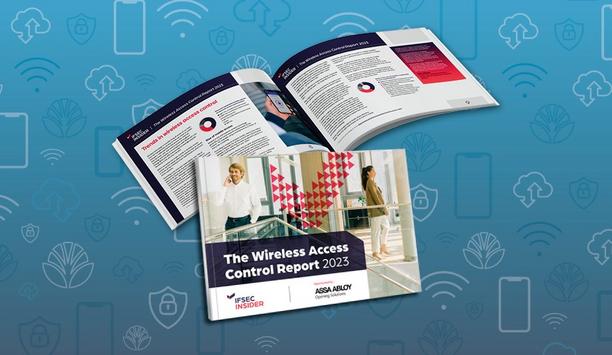
The Wireless Access Control Report 2023
Download
School Security Moves to the Cloud
Download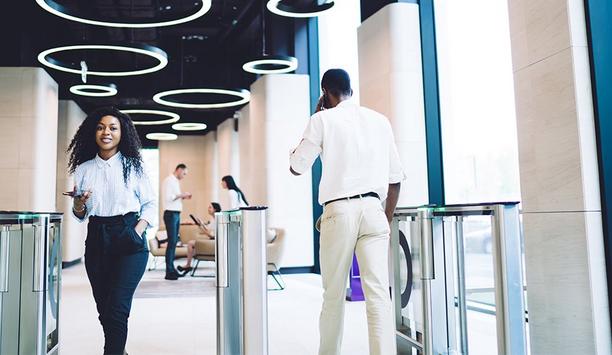
Cloud-based Access Control And Occupancy Management To Safeguard Workplaces
Download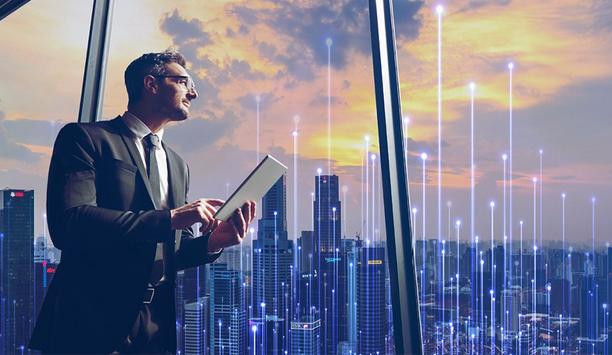
Delivering a Smart, Secure and Healthy Workplace with Cloud
Download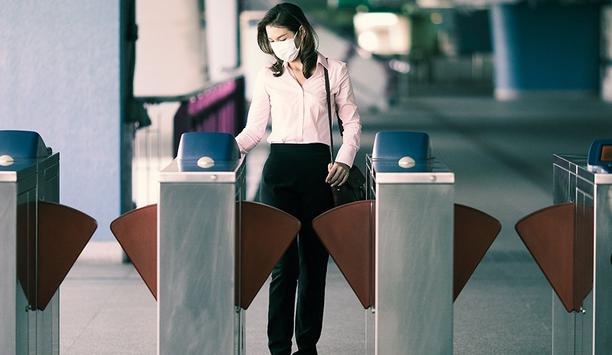
The Role of Access Control in a Safe Return to the Workplace
Download
5 Security Lessons For Navigating COVID-19
Download
How End-to-End Video Security Solutions Can Help Your Organization With Social Distancing
Download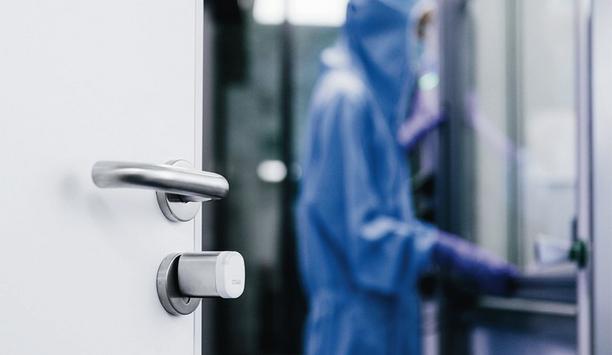
How Door Handles and Levers with Antimicrobial Treatment Reduce Disease Spread
Download
Building A Safe Ecosystem For Visitors Post COVID-19
Download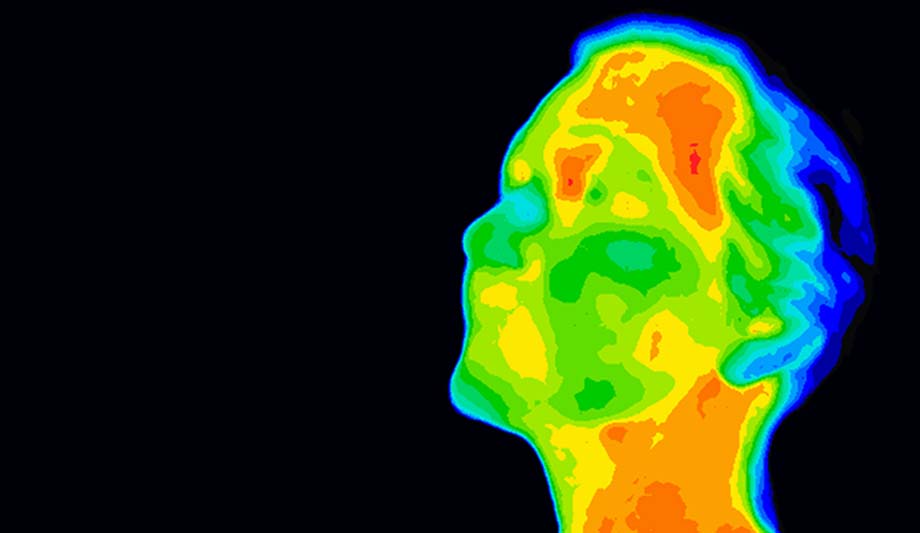
Thermal Cameras: Can They Accurately Detect Body Temperatures?
Download


